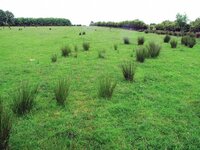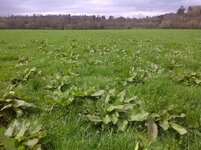tmc6891
Newbie
Evening all. I am new to this and am rubbish at electronics. Hopefully I can get some good advice here.
I was going to modify a atv sprayer boom so that I could fit some ultrasonic sensors beside each nozzle and wire it to a solenoid valve which will be plumbed to the pipework of the sprayer. The particular weed I am spraying sticks up out of the ground anything from 200mm to 600mm. I was hoping the ultrasonic sensors would detect this particular weed and activate the corresponding nozzle via solenoid valve. Therefore not having all the nozzles running constantly, only when needed and not wasting chemical. Hope this makes sense. In theory it should work. Where I am from, we can use an implement called a weed wiper but I was thinking this idea would apply a good accurate dose of chemical to the target weed.
But I would have no clue where to start when it comes to the electronics side of things,
How is it wired,
Do I need replys,
Would I have enough power from atv(12volt) to power pump, solenoids and sensors? Etc etc.
Any advice would be greatly appreciated.
I was going to modify a atv sprayer boom so that I could fit some ultrasonic sensors beside each nozzle and wire it to a solenoid valve which will be plumbed to the pipework of the sprayer. The particular weed I am spraying sticks up out of the ground anything from 200mm to 600mm. I was hoping the ultrasonic sensors would detect this particular weed and activate the corresponding nozzle via solenoid valve. Therefore not having all the nozzles running constantly, only when needed and not wasting chemical. Hope this makes sense. In theory it should work. Where I am from, we can use an implement called a weed wiper but I was thinking this idea would apply a good accurate dose of chemical to the target weed.
But I would have no clue where to start when it comes to the electronics side of things,
How is it wired,
Do I need replys,
Would I have enough power from atv(12volt) to power pump, solenoids and sensors? Etc etc.
Any advice would be greatly appreciated.

